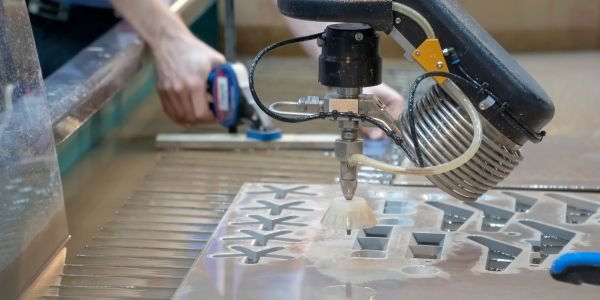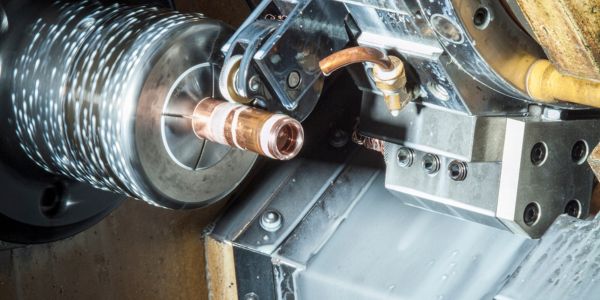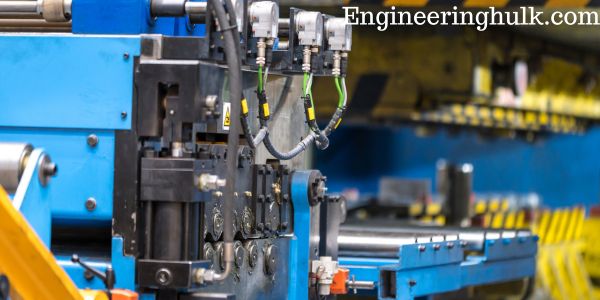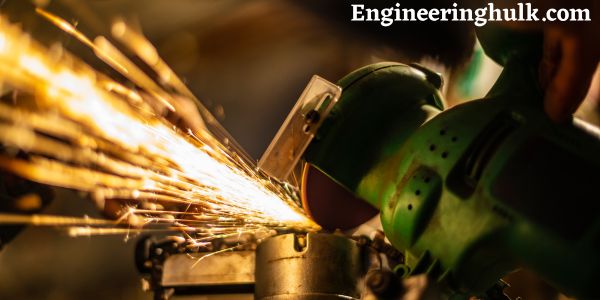Table of Contents
TIG welding, short for Tungsten Inert Gas welding, is a versatile and widely-used welding process known for its precision, control, and high-quality welds.
TIG Welding
TIG welding traces its origins back to the early 20th century when researchers were experimenting with various welding methods. It was in the 1930s when Russell Meredith, a Northrop Aircraft Corporation engineer, developed the fundamentals of TIG welding. He discovered that by using a non-consumable tungsten electrode to create an electric arc and an inert gas shield to protect the weld pool from contamination, he could produce high-quality welds with exceptional precision.
This innovative welding technique soon gained popularity in the aerospace and military industries.
Equipment and Setup
- Tungsten Electrode: The heart of TIG welding, the tungsten electrode is non-consumable and serves to create the arc. It can be pure tungsten or a blend of tungsten with other materials, each suited for different applications.
- Power Source: TIG welding requires a power source to produce the electric arc. Modern TIG welding machines are often equipped with advanced features like pulse control and adjustable amperage.
- Shielding Gas: TIG welding employs an inert shielding gas, usually argon or helium, to protect the weld pool from atmospheric contamination. The choice of gas depends on the materials being welded and the desired results.
- Torch: The TIG torch holds the tungsten electrode and directs the flow of shielding gas. It also includes a trigger for controlling the arc.
- Consumables: While TIG welding is primarily non-consumable, there are consumable components like filler rods or wires, which are added manually to the weld pool to build up material or enhance the weld.

TIG Welding Techniques
- Arc Initiation: TIG welding starts with the initiation of an electric arc between the tungsten electrode and the workpiece. This requires precision and is often achieved through a high-frequency start or touch-start method.
- Arc Control: TIG welding offers exceptional control over the heat input. Welders can adjust amperage and voltage settings to tailor the weld to the specific requirements of the project.
- Filler Material: Depending on the application, filler material may be added to the weld pool by manually feeding a consumable rod into the arc. This is common in applications where additional material is needed to create a strong joint.
- Shielding Gas Flow: The flow rate of the shielding gas is crucial to protect the weld from atmospheric contamination. Too much or too little gas flow can result in defects in the weld.
Advantages of TIG Welding
- Precision: TIG welding allows for fine control of the heat and welding process, resulting in precise, clean welds with minimal distortion.
- Cleanliness: The inert shielding gas creates a clean, slag-free weld with minimal spatter, making post-weld cleanup easier.
- Versatility: TIG welding can be used on a wide range of materials, from aluminum and stainless steel to copper and titanium.
- Weld Quality: TIG welding produces high-quality welds with excellent mechanical properties, making it suitable for critical applications.
- Aesthetic Appeal: TIG welds often have a visually appealing, smooth, and uniform appearance, making them ideal for applications where aesthetics matter.

Disadvantages of TIG Welding:
- Complexity: TIG welding is considered more complex and difficult to master compared to some other welding processes, primarily due to the need for precise control over multiple variables, including amperage, gas flow, and electrode positioning.
- Slow Welding Speed: TIG welding is generally slower than processes like MIG (Metal Inert Gas) welding, making it less efficient for high-volume production.
- Heat Input: While TIG welding offers excellent control over heat input, it can still generate significant heat, especially when welding thick materials. This can lead to distortion, warping, or even burn-through if not managed correctly.
- Limited Joint Thickness: TIG welding is most suitable for thin to medium-thickness materials. Welding extremely thick materials can be time-consuming and may require multiple passes, which can increase the risk of distortion.
- Manual Process: TIG welding is a manual welding process, which means that the welder must maintain a steady hand and precise control throughout the weld. This can be physically demanding and may lead to operator fatigue.
Applications of TIG Welding:
- TIG welding’s precision and versatility make it suitable for a wide range of applications, including:
- Aerospace: TIG welding is commonly used in the aerospace industry to join thin, lightweight materials like aluminum and stainless steel, ensuring the integrity and strength of critical components.
- Automotive: TIG welding is used for exhaust systems, roll cages, and aluminum body panels in high-performance and luxury vehicles.
- Petrochemical: TIG welding is essential for welding pipes and tanks in the petrochemical industry, where the welds must meet strict quality and safety standards.
- Art and Sculpture: Artists and sculptors appreciate TIG welding for its precise control, allowing them to create intricate metal sculptures and artwork.
- Food and Beverage: TIG welding is used to weld stainless steel components in food processing and beverage industries where hygiene and corrosion resistance are paramount.
- Pipe Welding: TIG welding is commonly used for welding pipes in industries such as petrochemical, pharmaceutical, and food processing. It produces clean, high-quality welds that meet strict regulatory requirements.
- Pressure Vessels: TIG welding is employed in the fabrication of pressure vessels, where the welds must maintain their integrity under high pressure and temperature conditions.
- Nuclear Industry: TIG welding is used in the nuclear industry for welding components in nuclear power plants, where precision and quality are paramount for safety.
- Bicycle Frame Manufacturing: TIG welding is a popular choice for crafting high-end bicycle frames, as it allows for precise control over frame geometry and ensures a strong, lightweight structure.
- Jewelry Making: TIG welding is used in the creation of fine jewelry, where the ability to join small, delicate components with precision is essential.
- Aircraft Repair: TIG welding is often employed in aircraft maintenance and repair to ensure the structural integrity of critical components.
- Electronics: TIG welding is used in the electronics industry to join components like copper conductors with precision, minimizing heat-affected zones.
TIG welding is a highly versatile and precise welding process that has revolutionized various industries. Its ability to produce clean, high-quality welds on a wide range of materials has made it a staple in aerospace, automotive, petrochemical, and artistic applications.
With the right equipment, training, and techniques, TIG welding offers welders the opportunity to create strong, reliable, and visually appealing joints that meet the stringent standards of modern industry.
Also, read about Mig Welding































Comments on “TIG Welding: Equipment, Techniques, Applications & More”
Comments are closed.